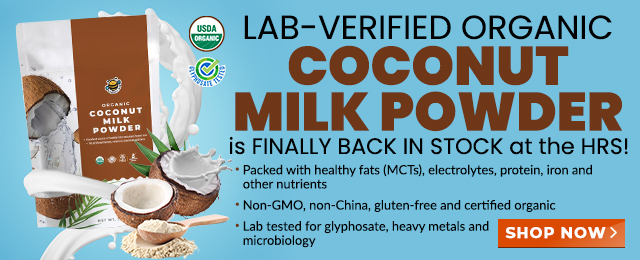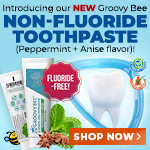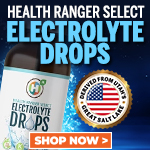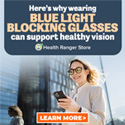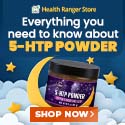
The great direct-to-consumer prescription drug advertising con: how patients and doctors alike are easily influenced to demand dangerous drugs
Sunday, July 31, 2005 by: Dani Veracity
Tags: direct-to-consumer advertising, drug ads, drug advertising
- TAKE IT DOWN Act advances in Congress amid free speech concerns
- Analysis: The coming economic collapse, a mass uprising and Trump's three secret weapons to halt the growing revolt
- Widespread social and economic unrest: Steve Quayle issues urgent financial warning of imminent asset collapse in new interview with Mike Adams
- Fauci is back in the limelight, and he’s busy promoting a future COVID or FLU pandemic
- Israeli lobbyists boast of controlling US national security policy in leaked AIPAC audio
- Tulsi Gabbard leads charge against the Biden regime’s global censorship of the 'Disinformation Dozen'
- Mike Adams releases country western hit single: Goin’ Back in Time is Comin’ Home
- Kiss Your Genetic Privacy Good-Bye! 23andMe Gets Green Light to Sell Your Intimate Genetic Details to Anyone They Want
- Aerosolized bioweapons? Strange “diploid biomasses” falling out of the sky in Florida captured under the microscope
- U.S. lawmakers investigate Meta over alleged China collaboration
- CLOT SHOT PLANDEMIC UNFOLDING: Fibrous, rubbery clots caused by covid injections have prion-like seeding activity
- Hospital staffers sound alarm after 10 nurses were diagnosed with BRAIN TUMORS
- Children’s Health Defense stands firm: Based on SCIENCE and personal experiences, the MMR vaccine is NEITHER SAFE nor EFFECTIVE
- Defunding DEADLY mRNA jabs: Government funding for mRNA technology being scrutinized and sidelined until proven "safe and effective" for real
- DEATH by VACCINE or face PRISON time: Canadian Freedom Convoy leaders CONVICTED for protesting forced vaccination during the Covid Plandemic
- Pfizer's RSV vaccine linked to preterm births as drug giant CONCEALED RISKS from pregnant women in unethical clinical trials
- Sen. Ron Johnson accuses CDC official in charge of COVID-19 injections of deleting records amid Congressional GOP scrutiny
- Shedding light on the dark side of MMR vaccines: How vaccinated individuals SPREAD MEASLES & put the vulnerable at risk
- Fauci is back in the limelight, and he’s busy promoting a future COVID or FLU pandemic
- Tulsi Gabbard leads charge against the Biden regime’s global censorship of the 'Disinformation Dozen'
- Aerosolized bioweapons? Strange “diploid biomasses” falling out of the sky in Florida captured under the microscope
- Analysis: The coming economic collapse, a mass uprising and Trump's three secret weapons to halt the growing revolt
- Kiss Your Genetic Privacy Good-Bye! 23andMe Gets Green Light to Sell Your Intimate Genetic Details to Anyone They Want
- Widespread social and economic unrest: Steve Quayle issues urgent financial warning of imminent asset collapse in new interview with Mike Adams
- U.S. lawmakers investigate Meta over alleged China collaboration
- Mike Adams releases country western hit single: Goin’ Back in Time is Comin’ Home
- Chemtrails unveiled: How the CIA and Big Business are manipulating the weather for profit
- Curcumin’s ancient healing power supercharges muscle recovery, and its effects are compounded with anti-inflammatory foods and supplements
- Tulsi Gabbard takes aim at censorship: Justice for the ‘Disinformation Dozen’
- China’s counter-tariff strategies: A new chapter in the U.S.-China trade war
- CLOT SHOT PLANDEMIC UNFOLDING: Fibrous, rubbery clots caused by covid injections have prion-like seeding activity
- Israeli lobbyists boast of controlling US national security policy in leaked AIPAC audio
- European Court of Justice: Healthcare professionals who promoted or administered COVID-19 vaccines are CRIMINALLY LIABLE for any harm caused
- Defunding DEADLY mRNA jabs: Government funding for mRNA technology being scrutinized and sidelined until proven "safe and effective" for real
- DEATH by VACCINE or face PRISON time: Canadian Freedom Convoy leaders CONVICTED for protesting forced vaccination during the Covid Plandemic
- U.S. approves new Russian ambassador as diplomatic thaw continues
- Newly released JFK files reveal Pentagon's role in creating Lyme disease and covid in the same lab
- Analysis: The coming economic collapse, a mass uprising and Trump's three secret weapons to halt the growing revolt
- Mike Adams releases country western hit single: Goin’ Back in Time is Comin’ Home
- Aerosolized bioweapons? Strange “diploid biomasses” falling out of the sky in Florida captured under the microscope
- Kiss Your Genetic Privacy Good-Bye! 23andMe Gets Green Light to Sell Your Intimate Genetic Details to Anyone They Want
- European Court of Justice: Healthcare professionals who promoted or administered COVID-19 vaccines are CRIMINALLY LIABLE for any harm caused
- Federal employees whine over DOGE's new directive requiring them to do a 5-point summary of weekly accomplishments
- Dr. Mike Yeadon releases 15-minute testimony - WATCH - about genocidal intent of COVID “vaccines”
- The Health Ranger releases “Vaccine Zombie” song and music video, using AI-animated zombies for the music video
- U.S. approves new Russian ambassador as diplomatic thaw continues
- Government waste exposed: Hegseth supports Musk’s demand for accountability from federal workers
- Trump reverses course on Gaza plan, says “nobody is expelling Palestinians”
- Now you can HEAR chemistry: Health Ranger translates molecules into music in stunning video demonstration that will blow your mind (and your ears)
- 5 Simple steps to boost your brainpower: How to strengthen executive function in a distracted world
- EPA advisor admits the agency is funneling billions to climate groups ahead of Trump’s return to White House
- A lack of integrity in Academia: Harvard professor found GUILTY of fraudulent research to promote CRT theory
- Rep. Nancy Mace introduces bill to ban biological males from female facilities on federal property
- Survival 101: Effective EMF blocking techniques
- Red Cross issues warning to stop blood plasma donations from vaccinated people
- Scientists confirm: GENIUS brain function can be spontaneously unleashed in humans without any apparent cause
- EPA advisor admits the agency is funneling billions to climate groups ahead of Trump’s return to White House
- HYSSOP: What research reveals about the health benefits of this ancient holy herb
- Two containers with completed ballots fall out of truck in Florida
- Newly released JFK files reveal Pentagon's role in creating Lyme disease and covid in the same lab
- Global leaders unite to clamp down on “misinformation” with UN-backed Cascais Declaration
- BREAKING: 2025 NDAA authorizes mandatory military draft of WOMEN across America… as Pentagon pursues global NUCLEAR war with both Russia and China at the same time
- Michael Yon warns of a ZIONIST TAKEOVER in Trump’s second administration
- Mike Adams releases country western hit single: Goin’ Back in Time is Comin’ Home
- Ozempic and Wegovy weight loss drugs are injectable LIZARD VENOM PEPTIDES that may unleash a devastating wave of organ failure… side effects align with symptoms of SNAKE BITES
- The Health Ranger releases “Vaccine Zombie” song and music video, using AI-animated zombies for the music video
- BOMBSHELL: DNA testing kits are a SCAM to develop ethnic-specific bioweapons
- Israeli soldiers accused of even more torture and abuse in the West Bank
- These 13 countries just signed an agreement to engineer a global FAMINE by destroying food supply
- NASA admits that climate change occurs because of changes in Earth’s solar orbit, and NOT because of SUVs and fossil fuels
- RFK Jr. clears key hurdle: Sen. Susan Collins backs controversial HHS nominee, signaling a new era for health policy
- Sermon 30: How Jesus reveals Caesar’s FAKE CURRENCY and FALSE AUTHORITY
These days, it's hard to tell the difference between pharmaceutical commercials and car commercials. Both are almost always intended to look "cool." Car and pharmaceutical commercials use the same hooks -- popular music, good acting and lofty promises -- to hook consumers and reel them in. Falling prey to car commercials results in little more than hefty car payments; however, becoming seduced by pharmaceutical companies can result in the consumer willingly taking powerful drugs, at the risk of serious illness and even death. In spite of this tremendous risk, pharmaceutical advertisements are becoming increasingly common and, unfortunately, increasingly effective.
In 2000, pharmaceutical companies spent $2.5 billion on mass media pharmaceutical advertisements, according to Mike Fillon in Ephedra: Fact or Fiction. This number increased to over $3 billion in 2003, according to Dr. John Abramson's book Overdosed America. In his book, Death by Prescription, Ray D. Strand looks at these high figures and poses the question: "Why?" Why do pharmaceutical companies spend billions of dollars on direct-to-consumer advertising, when consumers can only obtain prescriptions for these drugs through a doctor? Wouldn't it seem that consumers have no influence whatsoever on the success of a prescription drug, so advertising should be directed entirely toward doctors?
That makes sense, but it's not the way things work. Pharmaceutical companies wouldn't spend billions of dollars on direct-to-consumer advertising if it didn't work. In fact, the advertisements are working … too well. Fillon writes, "The average number of prescriptions per person in the United States increased from 7.3 in 1992 to 10.4 in 2000. Along with this increase in demand, there has been a shift towards the use of more expensive medications. It's more than a coincidence that many of the most expensive medications happen to be those medications that are most heavily advertised." In fact, between 1999 and 2000, prescriptions for the 50 most heavily advertised drugs rose six times faster than prescriptions for all other drugs, according to Katharine Greider's book, The Big Fix. So, how is direct-to-consumer advertising so effective in a system in which doctors write out the prescriptions?
Telling clever stories with misleading ads
Well, first, let's explore direct-to-consumer advertising, namely the television commercial. Most prescription drug commercials follow the same script progression: First, the commercial shows how bleak life was for a person or character before taking whatever prescription medicine the commercial is advertising. Then, the protagonist demonstrates or tells how wonderful life is while on the drug. Finally, a voiceover obligingly lists the side effects, often speaking as quickly and inaudibly as possible.Take, for example, a Paxil commercial that was recently popular. At the beginning of the commercial, the typical 30-something-year-old woman is standing outside a house, looking through the window at the happy party going on inside. She looks so lonely and depressed that it must break nearly every consumer's heart. "What's wrong with her?" we compassionate humans gasp in unison. The voiceover answers our question as we think it: The woman has social anxiety disorder, a condition that can be treated with the prescription drug Paxil.
Suddenly, the now-medicated woman rings the doorbell and, with a huge smile on her face, joins the party. We see how much fun she is having and we are so happy for her! Of course, the voiceover quickly goes through the list of Paxil's potential side effects, but how can we concentrate on that, when we're so busy rejoicing at the woman's new happiness? Whoever wrote that commercial should write Hallmark movies. After seeing it a few times, I was convinced that most of my non-immediate family had social anxiety disorder and I even called one relative up to suggest that she take Paxil. I'm not even a gullible person, yet I was persuaded by pharmaceutical company advertising.
Doctors prescribe whatever the patient names
We are what Strand calls a "self-medicated" society. Consumers do not actually write their own prescriptions, but they practically do, based on whatever drugs they see advertised on television. Strand writes, "Surveys reported in our medical literature reveal that when a patient comes into a doctor's office and requests a specific drug that he has seen advertised in the media, the doctor writes the exact prescription the patient requested more than 70 percent of the time!"So, let's say that a consumer who has been feeling a little sad lately sees a commercial for the antidepressant drug Zoloft. The commercial demonstrates the symptoms for depression and the consumer identifies with them. Suddenly, he or she thinks, "I'm not just sad. I'm depressed, which is a 'medical condition that can be treated by the prescription drug Zoloft.'" With this in mind, the consumer goes to a medical doctor and says, "I've been really depressed a lot lately. I've been [the consumer recites the depression symptoms listed in the Zoloft commercial]. I think I need Zoloft." So, according to Strand, there's a 70 percent chance the doctor will prescribe Zoloft, the exact prescription the consumer requested. That's how pharmaceutical commercials really work. They directly influence consumer behavior, yet drug companies claim they only "educate" patients, but don't persuade them to do anything.
Doctors are easy to manipulate, drug companies discover
You may be wondering why doctors base their prescriptions on the requests of their patients, who usually have no medical training whatsoever. That's a good question with a simple answer. The pharmaceutical-advertising machine seduces doctors, too.According to Burton Goldberg's book, Alternative Medicine, paid pharmaceutical advertisements are the main source of the Journal of the American Medical Association's revenues. The American Psychological Association is equally under the pharmaceutical companies' spell, as 15 to 20 percent of the American Psychological Association's (APA) income comes from pharmaceutical advertisements in its journals.
In Innocent Casualties, Elaine Feuer calls these advertisements "intentionally misleading" because they promote the pharmaceutical by "exaggerating a drug's benefits while downplaying its hazards in small print in the addendum." This is very similar to the obligatory "side effects" voiceover recited at the end of a pharmaceutical television commercial; neither consumers nor doctors pay much notice to the "final voiceover" or "fine print."
Just in case advertisements in the Journal of the American Medical Association (JAMA) haven't properly seduced doctors, pharmaceutical companies take an extra promotional step by aggressively "detailing" doctors, which involves promoting drugs through door-to-door giveaways of free information and samples, according to Health Care in the New Millennium. Morrison writes that "Pfizer alone has 4,500 people in its sales force," but these employees' salaries are small change compared to the increased revenue they encourage.
The next time you watch television or read a magazine, pay special attention to pharmaceutical advertisements. Notice their promotional hooks and be grateful that you, unlike most consumers, are no longer susceptible to their influence. That's what knowledge, unlike naiveté, brings you.
The experts speak on pharmaceutical advertising:
In the pharmaceutical area, DTC advertising has been increasing in the late 1990s at a rate of around 30 percent compounded annually. Once prevented by regulation from advertising aggressively, pharmaceutical companies now see DTC advertising as a major source of stimulating demand for their product; they spent $1.3 billion on DTC advertising in 1998 alone. This has had two key effects: (1) it has built brand awareness and product awareness in the minds of end users (consumers), who are increasingly taking medications for chronic conditions in increasingly crowded and competitive therapeutic categories—cholesterol management, cardiovascular diseases, asthma, allergy, and other forms of respiratory ailments; and (2) more directly, it has encouraged users to visit their doctors and ask for the product by name.Health Care in the New Millennium by Ian Morrison, page 44
In order to reach the widest audience possible, drug companies are no longer just targeting medical doctors with their message about antidepressants. By 1995 drug companies had tripled the amount of money allotted to direct advertising of prescription drugs to consumers. The majority of the money is spent on seductive television ads.
Death By Medicine by Gary Null PhD, page 13
In 2000, pharmaceutical companies spent $2.5 billion on mass media ads for prescription drugs. Admittedly, this is a small portion of the $101.6 billion spent on advertising of mainstream consumer products in the United States.
Ephedra Fact And Fiction by Mike Fillon, page 75
The stage could not have been set more perfectly for prescription drug advertising to become a major force in American medicine. And so it did. In 1991 the drug companies spent a paltry $55 million on advertising drugs directly to consumers. Over the next 11 years, this increased more than 50-fold to over $3 billion in 2003. The ads appeal to viewers as independent decision makers—capable of forming their own opinions about which drugs they need—and resonate with the growing concern that HMOs and managed care plans tend to withhold the best care to save money.
Overdosed America by John Abramson MD, page 81
While $3 billion in advertising may seem like an awful lot, rest assured that the drug companies aren't worried. Why? Americans are expected to spend over $500 billion on drugs this year—not including the extra $100 billion estimated for the Medicare drug benefit program. Spending on prescription drugs is now the fastest growing portion of healthcare spending in the United States.
Ephedra Fact And Fiction by Mike Fillon, page 176
Many of us don't find the amount of money spent on marketing prescription drugs to physicians surprising, but when considering the billions of dollars spent on marketing prescription drugs to the public, don't you wonder why? After all, you can obtain prescriptions only through a doctor. Pharmaceutical companies are willing to spend this kind of advertising money on only their most recently approved medication.
Death By prescription by Ray D Strand, page 48
The average number of prescriptions per person in the United States increased from 7.3 in 1992 to 10.4 in 2000. Along with this increase in demand, there has been a shift toward the use of more expensive medications. It's more than a coincidence that many of the most expensive medications happen to be those medications that are most heavily advertised.
Ephedra Fact And Fiction by Mike Fillon, page 77
According to a report prepared by the National Institute for Health Care Management, a nonprofit research foundation created by the Blue Cross Blue Shield health insurance plans, the fifty most-advertised prescription medicines contributed significantly last year to the increase in the nation's spending on drugs. The increases in the sales of the fifty drugs that were most heavily advertised to consumers accounted for almost half the $20.8 billion increase in drug spending last year, according to the study. The remainder of the spending increase came from 9,850 prescription medicines that companies did not advertise, or advertised very little. The study attributed the spending increase to a boost in the number of prescriptions for the fifty drugs, and not from a rise in their price.
Ephedra Fact And Fiction by Mike Fillon, page 77
Pharmaceutical companies are in business to make money; with the exception of over-the-counter medications that will be sold in great numbers, the only way a pharmaceutical company can make lots of money is by developing medications that can be patented. Natural herbs and foods as well as medications that can no longer be patented won't be "pushed" in advertising because there's no real money to be made on them.
Attaining Medical Self Efficiency An Informed Citizens Guide by Duncan Long, page 11
Not surprisingly the "super aspirin" have received lots of favorable press on the TV since there's money to be made. With the dollars pharmaceutical companies make, translating into greater advertising revenues for broadcasters and publishers, the rush is push the super aspirin and play up the "dangers" of common aspirin.
Attaining Medical Self Efficiency An Informed Citizens Guide by Duncan Long, page 13
The cheap-but-effective medications that can't be patented are also kept out of the limelight by the big companies paying for advertising and the mass media intent on making money through advertising.
Attaining Medical Self Efficiency An Informed Citizens Guide by Duncan Long, page 19
When you go into a pharmacy to get a prescription filled, you can often pay considerably less by choosing a "generic" drug over a brand name. The generic drugs are often made by the same manufacturer as the name-brand medication — the extra price is in the packaging and advertising. Even when a different company makes the generic medication, it is every bit as good as the brand name because it is required to meet certain standards before it can be sold in the US.
Attaining Medical Self Efficiency An Informed Citizens Guide by Duncan Long, page 183
In contrast, most physicians are unaware of the considerable risks and limited benefits of commonly used prescription cholesterol-lowering agents. In addition, since niacin is a widely available "generic" agent, no pharmaceutical company stands to generate the huge profits that the other lipid-lowering agents have enjoyed. As a result, niacin does not enjoy the intensive advertising that the HMG CoA reductase inhibitors and gemfibrozil enjoy. Despite the advantages of niacin over other lipid-lowering drugs, niacin accounts for only 7.9 percent of all lipid-lowering prescriptions.
Encyclopedia Nutritional Supplements by Michael T Murray ND, page 90
In addition, since niacin is a widely available "generic" agent, no pharmaceutical company stands to generate the huge profits that the other cholesterol-lowering drugs have enjoyed. As a result, niacin is not intensively advertised like the other drugs. Despite the advantages of niacin over the cholesterol-lowering drugs, niacin accounts for only 7.9 percent of all lipid-lowering prescriptions.
Encyclopedia Of Natural Medicine by Michael T Murray MD Joseph L Pizzorno ND, page 352
In 1996 Russia spent about $1.75 million on testing. But 1997 opened with a smaller HIV/AIDS budget, unpaid doctors and nurses countrywide, and hospitals with empty pharmaceutical shelves. Far from being able to afford $10,000 to $40,000 a year to treat HIV patients in ways that met U.S. standards, or to continue a nearly $2 million testing program, Russia couldn't even find the wherewithal to buy television advertising time on national television to promote AIDS education.
Betrayal Of Trust By Laurie Garrett, page 205
According to the study, Vioxx, an arthritis drug sold by Merck & Company, was the most-heavily advertised prescription drug and also accounted for more of last year's increased drug spending than any other single drug. Merck spent $160.8 million to promote Vioxx to consumers—more than PepsiCo spent to advertise Pepsi or Budweiser spent to advertise its beer, the study said. With the help of the advertising, Vioxx sales quadrupled to $1.5 billion last year from about $330 million in 1999.
Ephedra Fact And Fiction by Mike Fillon, page 77
And if that weren't enough, the British pharmaceutical company GlaxoSmithKline spent more on consumer advertising than any other company. It spent $417 million on advertising last year—an increase of 40 percent from the previous year.
Ephedra Fact And Fiction by Mike Fillon, page 178
Hundreds of millions of dollars are spent by pharmaceutical companies to research and then advertise their patented medical drugs to physicians and consumers. No such bankroll exists for nutritional supplements. That's because nutritional supplements, based on vitamins, minerals, herbs, and natural substances such as MSM, are not patentable.
The Miracle Of MSM by Stanley W Jacob, page 13
The reason drugs cost more in America than in any other country boils down to one simple factor: the pursuit of maximum profit. The pharmaceutical industry has taken every opportunity, used every ploy, to deceive the American people. To derail efforts at making pharmaceutical benefits an integral part of Medicare, they spent tens of millions of dollars on an advertising campaign to discredit the Canadian system, and even created a bogus organization, "Citizens for Better Medicare," to try to lend credibility to their efforts. And now they are introducing piecemeal discount card programs in an effort to defuse efforts for more comprehensive change.
Health Care Meltdown by Robert H Lebow MD, page 263
But Canada's system has born the brunt of negative advertising campaigns in the U.S., campaigns which have been successful in coloring Americans' perceptions of the Canadian system. The American Medical Association spent several million dollars in the early '90s to discredit the Canadian system and create doubts in the mind of the American public about a government-managed system for universal coverage. And in 2000, in a somewhat less successful ad campaign that cost perhaps $60 million, the American pharmaceutical industry tried to discredit the Canadian system. A ubiquitous "bus from Canada" appeared in a plethora of TV spots and full-page newspaper ads across the U.S. The goal was to derail efforts to make pharmaceutical benefits an integral part of Medicare.
Health Care Meltdown by Robert H Lebow MD, page 149
Most, but not all, megasites support themselves with ads for prescription drugs, vitamins, and medical sundries, as well as laptops, life insurance, and books — typical Internet commerce. Therefore, advertisers may influence the information you find on the site.
Healthcare Online for Dummies by Howard and Judi Wolinsky, page 23
With annual U.S. revenues of about $100 billion and worldwide revenues of $300 billion, the pharmaceutical industry is one of the largest, most powerful industries, producing some of the most sophisticated marketing and advertising anywhere. Marketing is the economic equivalent to waging war—sizing up your own forces, your enemy's (the competition), and emphasizing your own strengths and your enemy's weaknesses. Marketing strategy meetings are akin to war rooms where generals map out their plans for attack and defense.
Syndrome X by Jack Challem Burton Berkson MD and Melissa Smith, page 55
The reason that prescription drugs are not recognized as one of the biggest killers in America is complex. Drug companies who make huge profits from the sale of drugs spend more than $10 billion a year promoting drugs, and spend next to nothing warning the public about potential risks. Drug companies also engage in misleading advertising campaigns which make outright false or unrealistic claims, but which convince that vast majority of the public that most or all prescription drugs are not only safe, but the key to better health and a better life. The doctors themselves are also a part of the problem. Doctors chronically under-report and even ignore the deaths or adverse reactions to the drugs they prescribe because it is not in their professional self interest to raise public awareness to the danger. Doctors are afraid of being sued, they maintain a culture of denial, and they also profit from there relationships with the big drag companies. The government is also part of the problem because it does not have the resources or the political will to do more about the dangers of prescription drags. Also, powerful members of the American government, from the President on down, are all lobbied heavily by the cash rich drug companies.
Prescription Medicines, Side Effects and Natural Alternatives by American Medical Publishing, page 16
First of all, consider the fact that the American prescription drug industry - the giant pharmaceutical companies — is the most profitable industry in the world. Drug companies make more money than banks, more money than oil companies, more money than Ford or GM, more money than anybody. Drug companies spend billions of dollars on advertising and promotion -- some $10 billion every year. This advertising is directed at both doctors, and directly to the public.
Prescription Medicines, Side Effects and Natural Alternatives by American Medical Publishing, page 11
The United States is currently the only country in the world that allows drug companies to advertise prescription drugs directly to the consumer. It used to be that prescription drugs could only be touted to physicians. But now consumer ads on TV tantalize you with great promises of health and well-being, skim through the side effects as quickly as possible and then suggest you contact your physician or a drug company hotline for more information. The drug companies are also responsible for the expensive, slick, four-color ads you now see in consumer magazines and newspapers. You are bombarded with $3 billion worth of advertising for prescription and over-the-counter drugs every year. That should give you an idea of how valuable you are as a drug consumer and of the staggering profits the drug companies rake in every year.
Prescription Alternatives by Earl Mindell RPh PhD and Virginia Hopkins MA, page 531
Pharmaceutical companies spent $2.5 billion in 2000 promoting prescription drugs, an increase of nearly 45 percent over 1999. These advertisements contribute to rising costs by inducing consumer demand for newer, higher-priced drugs, when the older ones may work just as well.
Prescription For Dietary Wellness by Phyllis A Balch, page 285
Claritin, a formerly prescription antihistamine used to control allergic symptoms, was far and away the most heavily advertised prescription drug in the two years following the FDA's 1997 rules change. They resisted the idea that there were equally good and perhaps even better ways to relieve their allergy symptoms than a new (and therefore less well tested) drug. Moreover, they were unconcerned about Claritin's cost (more than $2.10 per day): most had prescription drug coverage as part of their health insurance. With an advertising budget greater than that of Budweiser beer or Coca-Cola, Claritin took off: sales grew from $1.4 billion in 1997 to $2.6 billion in 2000.
Overdosed America by John Abramson MD, page 153
Thus, it is not surprising that direct-to-consumer prescription drug advertising is expected to increase to $7.5 billion by 2005, a 1,200% increase over a decade, as drug manufacturers decide, as Vodra put it, to "fight fire with fire in the marketplace. It's only a small step from that to the adoption of an 'offense is the best defense' policy as marketing pressures intensify."
Overdose by Jay S Cohen, page 162
The medication marketplace is a very competitive world. At pharmaceutical companies, doctors usually don't make the final decisions—business people make them. In order to sell medications, good and bad, elaborate marketing and advertising strategies are necessary, and impressive rates of effectiveness are essential.
Overdose by Jay S Cohen, page 35
A self-medicated society
Not only are we an overmedicated society, we are a self-medicated one. It's true, physicians are prescribing more drugs than ever before, but not only is the pharmaceutical industry effective in advertising prescription medications, it has overwhelmingly persuaded the American public to buy tons of over-the-counter medications.
Death By prescription by Ray D Strand, page 169
Surveys reported in our medical literature reveal that when a patient comes into a doctor's office and requests a specific drug that he has seen advertised in the media, the doctor writes the exact prescription the patient requested more than 70 percent of the time!
Death By prescription by Ray D Strand, page 49
But, again, there is a problem. While TV ads for drugs do indeed list potential harmful side effects, the slickly produced ads gloss over them so fast, and with such finesse, it creates an overwhelming impression among the public that these potential dangers are all but nothing to worry about. Also, TV ads do not list all of the potential side effects, but rather, just the most common side effects. So in effect, advertisements for prescription drugs on television are literally lying by omission.
Prescription Medicines, Side Effects and Natural Alternatives by American Medical Publishing, page 13
30 percent of consumers reported having talked with their doctor about a drug they'd seen advertised. Nearly half of those who asked for an advertised drug—13 percent of all consumers—came away with a script. In another Kaiser study, co-sponsored by The NewsHour with Jim Lehrer, nearly half of American consumers said they trust advertisements to provide them with accurate information. But perhaps most telling are these results of a recent NIHCM study: Between 1999 and 2000, prescriptions for the fifty most heavily advertised drugs rose at six times the rate of all other drugs. Sales of those fifty intensively promoted drugs were responsible for almost half the increase in Americans' overall drug spending that year. Makers of the new arthritis drug Vioxx spent $160 million pushing it to consumers in 2000, more advertising dollars than were dropped on Pepsi Cola, Budweiser beer, Nike shoes, or Campbell's soups. Vioxx sales shot up 360 percent.
The Big Fix by Katharine Greider, page 30
Only the United States and New Zealand permit advertising of prescription medicines to consumers.
Ephedra Fact And Fiction by Mike Fillon, page 255
This practice of massive advertising campaigns for drugs in order to convince us and our doctors that we "need" various drugs and specifying which drugs we do need should be a great concern for us. CONSUMER REPORTS discussed this issue at length in two articles which ran concurrently in the February and March 1992 issues entitled "Pushing Drugs to Doctors" and "Miracle Drugs or Media Drugs?" They estimate a figure of 5 billion dollars was spent in 1991 for this type of advertising and add, "Though doctors insist their scientific training, high intelligence, and sophistication enable them to resist manipulation, the truth is that skillful marketers can influence M.D.s just as easily as they can sway the rest of us.." The pharmaceutical companies spend more on this advertising than they spend in research and development of products.
PROZAC Panacea or Pandora by Ann Blake Tracy PhD, page 43
Merrell Dow pharmaceuticals mounted a massive advertising campaign admonishing, "If you want to quit smoking for good, see your doctor. . . . Now your doctor can provide a treatment to help control nicotine withdrawal symptoms." The smoking industry is too vast and the number of smokers wishing to quit too lucrative for smoking to be overlooked as a medical problem.
Diseasing Of America by Stanton Peele, page 119
The unnecessary surgery figures are escalating just as prescription drugs driven by television advertising. Media-driven surgery such as gastric bypass for obesity "modeled" by Hollywood personalities seduces obese people to think this route is safe and sexy. There is even a problem of surgery being advertised on the Internet. A study in Spain declares that between 20 and 25% of total surgical practice represents unnecessary operations.
Death By Medicine by Gary Null PhD, page 19
Since the mid-1990s, pharmaceutical companies have tripled the amount of money they spend on direct-to-consumer advertising prescription drugs. From 1996 to 2000, totals rose from $791 million to nearly $2.5 billion. And despite the huge increase, drug companies spend even far more dollars in advertising their products to physicians, not consumers. The $2.5 billion figure for consumer ads is concentrated on a relatively small handful of medications.
Ephedra Fact And Fiction by Mike Fillon, page 176
Eli Lilly's advertisements in the general media for Prozac specifically state: "Like other antidepressants, it isn't habit forming." No wonder so many patients are not informed either about serious withdrawal syndromes or dependence. Obviously such statements by pharmaceutical companies and drug advocates are attempts to "educate" the public out of their healthy concerns about drugs in general, including Prozac-type medications. Although aggressively advanced, such pronouncements are at odds with the clinical reality for many patients on the drugs.
Prozac Backlash by Joseph Glenmullen MD, page 89
Yet the healthcare industry — as with most other industries — is slow to recognize the Internet's potential business opportunities and threats. In addition, there is strong and irrational Internet resistance from physicians, who control about 80 percent of healthcare resources. Not surprisingly, pharmaceutical companies are switching their advertising budgets to target consumers rather than physicians in an attempt to influence how consumers determine their medical treatment needs.
Future Consumer com by Frank Feather, page 190
The pharmaceutical companies have been quick to realize the potential of this expanding market and are beginning to target advertising for prescription medicines directly to consumers, on television and in print. These developments can be positive, but they do require more effort and responsibility from all of us.
Graedons Best Medicine by Joe Graedon & Dr Terasa Graedon, page 111
Among the wealthy nations that support the global pharmaceutical industry, the United States is by far the most permissive in its regulatory scheme. As other countries move to control prices and sharply limit advertising, the industry increasingly turns to American consumers for its profits.
The Big Fix by Katharine Greider, page 172
The Kaiser Family Foundation reports that with thousands of drugs on the market, 60 percent of DTC spending in 2000 went to plug just twenty products. This intensive exposure creates what ad people call "brand awareness." A recent survey by market research firm Insight-Express found that, for example, 74 percent of respondents knew Claritin by name. More than half recognized Paxil, 45 percent knew the cholesterol-lowering Zocor, and nearly 80 percent were aware of the pharmaceutical phenomenon Viagra. All have been among the most heavily advertised drug products.
The Big Fix by Katharine Greider, page 91
This translates to a likelihood that prescriptions are being given for drugs that are more dangerous and less effective than patients—or even doctors—realize. Until changes are made, both physicians and patients will be harmed by prescribing decisions based on all-too-frequently generalized and misleading information from advertisements.
Ephedra Fact And Fiction by Mike Fillon, page 178
Pharmaceutical companies have overcome the obstacles of managed care. They have sophisticated pharmacoeconomic teams to negotiate the presence of their products on the formulary, and they have understood how to use both legislative action and sophisticated marketing to ensure that their products are not cut out of either Medicaid or private sector formularies. They have been significantly investing in DTC advertising as well as expanding their sales forces for detailing physicians. This is the business model for the pharmaceutical industry in the late 1990s, and industry leaders anticipate that these good times will continue rolling into the future.
Health Care in the New Millennium by Ian Morrison, page 48
Yet the mainstream media operate with somewhat of a double standard. They are willing, even eager, to use the video news releases from the pharmaceutical and medical technology industry. The morning talk shows are full of medical technology miracles; they cover the wonders of new drugs and medical devices and technology using the canned television images provided by the industry. More recently the media have been given further conflicting incentives with the enormous explosion of direct-to-consumer advertising; page after page of pharmaceutical industry supplements appear in popular media. For example, pharmaceutical giant Pfizer purchased all of the advertising space in an entire issue of Time magazine on the "Future of Medicine." Similarly, Johnson and Johnson purchased the advertising space of an entire issue of Newsweek.
Health Care in the New Millennium by Ian Morrison, page 79
Another issue associated with the cultural view of menopause has to do with issues of youth and femininity. As Dr. Andrew Weil writes in his Self Healing newsletter, "there is an unstated selling point that is quite clear in pharmaceutical company advertisements: that it is a chemical fountain of youth offering persistent beauty, attractiveness, and satisfying sexuality in the face of advancing age.
Herbal Defense by Ralph T Golan ND, page 210
Anyone who watches television cannot but help notice a new trend in the past couple of years — suddenly our TV programs are flooded with advertisements for dozens of new prescription drugs. And they seem to promise everything. Night after night, television commercials paid for by drug companies are promising to fix or cure everything from depression and sleeplessness, to arthritis and allergy problems. You name it, they've got a drug for it, be the problem as serious as cancer, or as trivial as baldness and unattractive toenails.
Prescription Medicines, Side Effects and Natural Alternatives by American Medical Publishing, page 12
The 1997 change unleashed an unprecedented onslaught of commercials. By 1999, the average American was exposed to nine prescription drug advertisements on television every day. The number of television ads increased 40-fold between 1994 and 2000. Suddenly it became a normal part of our everyday experience to be confronted with the idea that we or a loved one might be suffering from ED (erectile dysfunction, for those not in the know), arthritis pain, high cholesterol, nasal congestion, osteoporosis, heartburn, or even the heartbreak of toenail fungus. In the "teachable moments" created by these skillfully raised concerns, consumers are "educated" about readily available drugs to solve the problem.
Overdosed America by John Abramson MD, page 152
Pharmaceutical advertising in medical journals and though 'detailing' seduces doctors
By 1900, there were 22 homeopathic medical schools and nearly 100 homeopathic hospitals in the U.S. In fact, 15% of all American physicians practiced homeopathy at the turn of the century, according to Trevor Cook, Ph.D., D.I.Horn., President of the British Homeopathic Medical Association." However, by the same time, the bond between the AMA and the pharmaceutical companies was firmly established. Paid advertisements from pharmaceutical companies in the AMA's journal were the AMA's main source of revenue (as it is today). Prominent physicians were paid to endorse proprietary drugs and doctors were deluged with free samples of pharmaceutical drugs. Through a series of maneuvers including a new rating system for medical schools aimed at eliminating homeopathic colleges, the practice of homeopathy had nearly disappeared as a force in American medicine by 1930.
Alternative Medicine by Burton Goldberg, page 520
Drug company money influences every aspect of modern-day psychiatry. The American Psychiatric Association is literally built on a foundation of drug money: millions of dollars of pharmaceutical advertising money are poured into the APA's publications, conferences, continuing education programs, and seminars. In return, the APA bends over backward to help drug companies promote their products. And 15 to 20 percent of the APA's income in recent years has come directly from drug company advertising in APA journals—another means of guaranteeing good press for new drugs.
A Dose of Sanity by Sydney Walker III MD, page 230
Pharmaceutical ad campaigns and the distribution of free samples usually determine the drugs doctors use to treat patients with. Advertisements in prominent medical journals are intentionally misleading, exaggerating a drug's benefits while downplaying its hazards in small print in the addendum. Although the FDA requires advertisers to present a "fair balance," Cheryl Graham, Acting Director of the FDA's Marketing Division, admits that one-half of the journal ads violate this standard. And since the FDA screens only 10 to 20 percent of all drug promotions, physicians are forced to take drug companies at their word.
Innocent Casualties by Elaine Feuer, page 73
Direct-to-consumer marketing increased 30 percent in 1998 alone. Through TV, magazine, and newspaper advertising, pharmaceutical companies are taking their message directly to the public. If it weren't for pharmaceutical advertising supplements, Newsweek would be only three pages long. Similarly, pharmaceutical companies have focused on "detailing" physicians very aggressively (that is, promoting products through sales calls to doctors to provide information and free samples). Pfizer alone has forty-five hundred people in its sales force. Bristol-Myers Squibb and Hoffman-La Roche, for example, added over one thousand salespeople over the last couple of years. Drug companies know that putting sophisticated detailing teams in the field to promote their products to doctors makes a difference in prescribing behavior. Doctors may find this offensive, but detailing works.
Health Care in the New Millennium by Ian Morrison, page 30
The FDA's bias is further shown by its selective implementation of policy directives. Its duty, by law, is to set standards for drug advertisements. Yet, according to a study conducted at the University of California and published in The Wall Street Journal, 60% of the pharmaceutical ads from medical journals violated FDA guidelines. But the FDA, to this day, has done nothing about these violations.
Alternative Medicine by Burton Goldberg, page 48
Such results can be reported by medical journalists—which are also hired by these PR firms—in unsuspecting medical journals. Healthcare PR firms also undertake conventional lobbying strategies, such as opposing restrictions on "direct-to-con-sumer" advertising, which allows companies to market prescription and OTC drugs using the same techniques as toiletry items. They can also move very quickly and deftly to "squash" any negative news about their clients, as well as to promote damaging news about others. Could it be this is a strategy being deployed against the dietary supplement industry?
Ephedra Fact And Fiction by Mike Fillon, page 146
Furthermore, physicians who abide by a conventional Western medical perspective are more likely to publish papers and be on editorial boards of scientific journals than their peers who hold to different philosophies. "There is kind of a self-selection process where physicians who are against alternative medicine end up being on the editorial boards of the journals," Dr. Gaby says. It's important to bear in mind that many medical journals receive a substantial amount of revenue from the advertising dollars they get from the pharmaceutical industry, whose interests would not be served by articles and studies that recommended the use of alternative medicine over drugs and surgery.
Alternative Medicine by Burton Goldberg, page 51
We are fully aware that what stands in the way of change are powerful pharmaceutical companies, medical technology companies, and special interest groups with enormous vested interests in the business of medicine. They fund medical research, support medical schools and hospitals, and advertise in medical journals. With deep pockets they entice scientists and academics to support their efforts. Such funding can sway the balance of opinion from professional caution to uncritical acceptance of a new therapy or drug. You only have to look at the number of invested people on hospital, medical, and government health advisory boards to see conflict of interest. The public is mostly unaware of these interlocking interests. For example, a 2003 study found that nearly half of medical school faculty, who serve on Institutional Review Boards (IRB) to advise on clinical trial research, also serve as consultants to the pharmaceutical industry.
Death By Medicine by Gary Null PhD, page 10
Yet doctors repeatedly make new drugs bestsellers within months. Drug reps fill doctors' cabinets with "free" samples, knowing that if patients do well on them, they won't want to switch. Drug advertising seizes upon any difference, no matter how trivial, to sway doctors to prescribe expensive new drugs with no track records, and doctors readily oblige. You'd think that after recent disasters with Baycol, Rezulin, Lotronex, Duract, Redux and Fen-Phen, doctors would learn, but they keep prescribing new drugs like Clarinex, Nexium, and Bextra at greater risk and cost. These repeated problems compelled Drs. Marcia Angell and Arnold Relman, another former editor of the New England Journal of Medicine, to warn, "Few Americans appreciate the full scope and consequences of the pharmaceutical industry's hold on our health care system."
Disease Prevention And Treatment by Life Extension Foundation, page 725
At first, pharmaceutical companies stepped up advertising, some of which ran for four pages, in the medical journals and weekly magazines sent to doctors' offices. Soon, such ads constituted the medical journals' major source of funding, and while they continue to deny it, publishers are influenced by the pharmaceutical industry in choosing which articles to print. Articles concerning alternative treatments, such as the use of nutritional supplements, are few in number in clinically oriented journals, and usually are routinely rejected in favor of articles extolling the virtues of a prescription drug or surgical procedures.
Health And Nutrition Secrets by Russell L Blaylock MD, page 344
Recently, pharmaceutical companies have launched an even cleverer plan. Whereas, in the past they depended on frequent visits to the doctors' offices by drug reps to convince doctors to use their drugs, now they've bypassed doctors altogether and advertise directly on television and the radio, urging people to tell their doctors they want to try the advertised drug.
Health And Nutrition Secrets by Russell L Blaylock MD, page 366
If you scan most clinical journals, you will see that they are filled from cover to cover with ads from pharmaceutical companies and medical supply dealers. These are very expensive ads. In addition, many of these companies give grants to the journals in which they advertise. Unfortunately, this is also true of many nutrition journals as well. Doctors tend to read the articles that deal with new drugs being developed, new surgical techniques, and advances in diagnosis. The scattered nutritional or biochemical articles are rarely read.
Health And Nutrition Secrets by Russell L Blaylock MD, page 367
This subtle type of bias sometimes becomes more blatant. For example, a former editor of the Journal of the American Medical Association (JAMA) alleged that Pfizer, a major pharmaceutical company, had withdrawn $250,000 worth of advertising because an article appearing in JAMA had cast one of their drugs in an unfavorable light.
Preventing And Reversing Osteoporosis By Alan R Gaby MD, page 249
Another area in which pharmaceutical companies wield enormous influence is medical "education." Most doctors in this country are visited on a regular basis by "representatives," salesmen from large pharmaceutical companies. In surveys, doctors list pharmaceutical salesmen as one of their most important sources of information about new drugs. Salesmen and drug company "literature" are where doctors first learn about things like "serotonin imbalances" and serotonin "selectivity." Lavish advertisements in medical journals carry similar messages.
Prozac Backlash by Joseph Glenmullen MD, page 226
Doctors have access to many other sources of medical information. Some invite pharmaceutical representatives into their offices and conferences, and some attend industry-sponsored conferences. Some avidly read free pamphlets and journals sent to them by pharmaceutical companies. By contrast, some read only the journals that come as part of membership in a professional society, and pay their own money to subscribe to sources that are not dependent on pharmaceutical company support, contain no advertising, and are funded entirely by subscription fees.
On The Take by Jerome P Kassirer M.D., page 84
Dr. Richard Smith, editor of the British Medical Journal, has raised the concern that lucrative advertising and reprint sales can be a corrupting influence. One experience at the Annals of Internal Medicine in 1992 sent a chill down the spines of editors and publishers alike. When the (then) editors, Drs. Suzanne and Robert Fletcher, published a study sharply critical of the pharmaceutical industry, pharmaceutical advertising in the journal declined substantially, and remained lower than usual for months thereafter. For editors of many journals whose profit margins are not robust, that experience might lead them to be chary about criticizing the advertisers who support their publications.
On The Take by Jerome P Kassirer M.D., page 91
Drug companies often claim that they are just helping the public by providing physicians the best information possible. They admit that they might make friends and generate goodwill for their companies in the process, but their primary goal, they claim, is education, not marketing. One provider of medical education, Joe Torre, the chief executive of an advertising agency that owns its own clinical research company, said, "Very often doctors are more influenced by what other doctors say than what pharmaceutical companies have to say. So companies work through medical education companies to have doctors who support their products talk about their products in a favorable way. That's called medical education."
On The Take by Jerome P Kassirer M.D., page 93
In effect, the publication is more a paid advertisement for industry than a publication of a learned medical society. In fact, the misleading headings are only part of the deception. The title, Symposia Excerpts, misleads the reader to thinking that he is reading selected summaries of key talks on the formal schedule of the conference. In fact, they are summaries of after-hours conferences sponsored by pharmaceutical companies. Despite the assertion on the cover that the Symposia Excerpts is a publication of the ATS, the ATS carefully disavows responsibility with a disclaimer that reads: "The opinions expressed in this publication are those of the speakers and do not necessarily reflect the opinions or recommendations of their affiliated institutions, the publisher, the American Thoracic Society, or any other persons."
On The Take by Jerome P Kassirer M.D., page 121
The PDR, free meetings and gifts, and direct contact by drug-company representatives constitute three major ways that drug companies influence physicians' choices of medications. A fourth way is advertising. Most of this advertising is done in medical journals, which also serve as an important source of information for physicians.
Overdose by Jay S Cohen, page 56
In fact, pharmaceutical companies spend more than 21 billion dollars a year on promoting and marketing their products, of which about 88 percent is directed at physicians. With approximately 600,000 physicians in active practice this amounts to more than $30,000 spent on each physician. Although industry market research data are unavailable, studies of physicians show what common sense predicts, namely that physicians are influenced by all kinds of marketing tactics.
On The Take by Jerome P Kassirer M.D., page 78
Beyond these direct influences, drug companies exert broad influence over the drug information received by doctors and consumers. The vast majority of everything physicians and consumers read and know about medications comes from the drug companies. Medication package inserts, drug advertising toward physicians and consumers, and the information in the ubiquitous Physicians' Desk Reference come directly from the drug companies. Where do most doctors turn for medication and dosage information? To the PDR, to drug company representatives who make the rounds of doctors' offices, and to advertising in medical journals. Yet, the medication information offered by these drug-company-supported sources is often biased, incomplete, and sometimes inaccurate.
Overdose by Jay S Cohen, page 16
A cursory look at almost any medical journal will reveal dozens of advertisements by the drug companies. Glossy ads promote the efficacy or ease of usage of drugs. Some ads boast that physicians don't have to bother reducing the drugs' dosages for older people, not even for those with other disorders or taking other medication. The content of these ads is based on the information in package inserts, with the same limitations or omissions of important side effects and/or lower, safer doses.
Overdose by Jay S Cohen, page 56
A historical perspective of pharmaceutical advertising
One may guess that papers taking advertising dollars from poppers' pharmaceutical source were in no hurry to dig up the unflattering history of animal experiments that did see immune damage stemming from use of the drug.
Aids A Second Opinion by Gary Null PhD with James Feast, page 200
Back in the World War II era, it was the same for tobacco. Page through a few magazines of the day to look at the advertisements for Pall Mall or Lucky Strike and you will find that smoking is not only proclaimed to be safe but even said to promote health! Moreover, everybody was lighting up, just as in a certain strata, everybody was inhaling. Poppers and cigarettes were sexy, for god's sake. What is being asserted, then, is that certain practices that now seem unconscionably risky were once seen as innocent, as innocent as, in days gone by, puffing on a Lucky.
Aids A Second Opinion by Gary Null PhD with James Feast, page 265
Fishbein was the most powerful man in American medicine in his day. The AMA (and Fishbein) consolidated their hold over American medicine. Subscriptions to the Journal had increased from 13,078 in 1900 to over 80,000 by 1924. Income from pharmaceutical advertising was already in the hundreds of thousands of dollars. Yet AMA leaders were conscious of the threat posed by irregular practitioners. Ironically, the long-time General Manager of the Association, George H. Simmons, MD, had himself been a homoeopathic practitioner in Lincoln, Nebraska, "and one of a rather partisan hue."
Herbs Against Cancer by Ralph W Moss PhD, page 75
FDA control (or lack or control) of pharmaceutical advertising
Another connection between the FDA and the pharmaceutical industry is through the pharmaceutical Advertising Council (PAC). In 1985, the PAC teamed up with the FDA to solicit funds from the pharmaceutical industry for the purpose of combating medical quackery. "The pharmaceutical Advertising Council and the FDA also issued a joint statement addressed to the presidents of advertising and PR agencies nationwide asking them to cooperate with a joint venture anti-fraud and quackery campaign," according to Mark Blumenthal, Executive Director of the American Botanical Council.
Alternative Medicine by Burton Goldberg, page 48
The primary culprit in promoting the misprescribing and overprescribing of drugs is the pharmaceutical industry, which now sells about $80 billion worth of drugs in the United States alone. By intimidating the Food and Drug Administration (FDA) into approving record numbers of me-too drugs (drugs that offer no significant benefit over drugs already on the market) that often have dangerous adverse effects and by spending well in excess of $12 billion a year to promote drugs, using advertising and promotional tricks that push at or through the envelope of being false and misleading, this industry has been extremely successful in distorting, in a profitable but dangerous way, the rational processes for approving and prescribing drugs. Two studies of the accuracy of ads for prescription drugs widely circulated to doctors both concluded that a substantial proportion of these ads contained information that was false or misleading and violated FDA laws and regulations concerning advertising.
Worst Pills Best Pills by Sidney M Wolfe MD and Larry D Sasich PharmD MPH, page 10
The division at FDA responsible for policing prescription drug advertising has not been given adequate resources to keep up with the torrent of newly approved drugs. As a result, the drug industry correctly believes it can get away with more violative advertising than in the past. The role of the U.S. Congress in pushing the FDA into approving more drugs, and passing, with the FDA's reluctant approval, legislation to further weaken the FDA's ability to protect the public, cannot be overlooked.
Worst Pills Best Pills by Sidney M Wolfe MD and Larry D Sasich PharmD MPH, page 10
Though broadcast advertising of prescription drugs has been legal for years, guidelines released by the FDA in 1997 clarified the rules for advertising directly to consumers. According to these guidelines, drug companies can fulfill their obligations for informing consumers about prescription drugs by referring in advertisements to four sources of additional information: their doctor, a toll-free number, a magazine or newspaper ad and a website.
Ephedra Fact And Fiction by Mike Fillon, page 77
Health care advocates were shocked by the decision of the Food and Drug Administration (FDA) to allow drug makers to advertise prescription drugs on television giving only minimal information about the risks involved.
Under The Influence Modern Medicine by Terry A Rondberg DC, page 70
And for the first time in decades, pharmaceutical companies are advertising heavily direct to the public. The 1962 Harris-Kefauver Amendment to the Federal Food and Drug Act imposed strict regulations on pharmaceutical company advertising. The requirements brought to a halt the aggressive marketing of notorious drugs like amphetamine antidepressants and barbiturates. But in the mid-1990s, the FDA liberalized the requirements pharmaceutical companies have to meet. The result has been a surge of advertising drugs direct to consumers.
Prozac Backlash by Joseph Glenmullen MD, page 231
Wilkes and a group of colleagues had earlier conducted a study of prescription drug advertisements which showed "many claims prove to be inaccurate or misleading." The study was published in the June 1,1992 issue of the Annals of Internal Medicine. For the study, Wilkes' group asked medical experts to review 109 advertisements from the country's ten leading medical journals. Using the FDA's guidelines for pharmaceutical company advertising, the reviewers "indicated that 92% of advertisements were not in compliance in at least one area" of the FDA's guidelines. Wilkes' group speculated "that the FDA is unable or unwilling to enforce adequately its rules relating to drug advertising.
Prozac Backlash by Joseph Glenmullen MD, page 232
For years the pharmaceutical industry was allowed to market its drugs only to doctors. It did this through medical journals, continuing medical education, sponsored events, sales calls, and junk mail. Then, in 1981, the drug industry proposed that the FDA allow advertising directly to consumers, arguing that the public should not be denied access to the "knowledge" that would be provided by such marketing. Four years later, the pharmaceutical industry got its foot in the door when the FDA agreed to allow "direct-to-consumer" (DTC) advertising. But the rules were strict, and the content of the ads was, therefore, limited: Drugs could be mentioned by name, but advertisements that discussed the treatment of specific conditions were required to include a lengthy list of side effects and contraindications (situations in which the drug should not be used). As a result, the ads were vague and unfocused, primarily brand-awareness campaigns designed to smooth the way at the doctor's office.
Overdosed America by John Abramson MD, page 151
In the fall of 1971, the FDA also made a serious attempt to halt the growth of the increasingly popular field of alternative medicine. By defining all unorthodox medical treatments as "quackery," which they interpreted as "misinformation about health," the FDA attempted to prevent physicians, manufacturers, and consumers from practicing alternative therapies. The federal government's war against quackery was supported by the pharmaceutical companies and the AMA. In 1985 the pharmaceutical Advertising Council and the FDA solicited funds from the pharmaceutical industry to combat medical quackery; they also issued a joint statement addressed to the presidents of advertising and PR agencies nationwide, asking them to cooperate with the anti-quackery campaign.
Innocent Casualties by Elaine Feuer, page 11
Although it is entirely legal for a doctor to use a drug off-label, it is illegal for a drug company to advertise a drug for any purpose other than the one or ones approved by the FDA. By recruiting physicians to discuss off-label uses, therefore, the drug companies, in essence, bypass official channels and create a potent marketing force of physicians. One flagrant example of physicians aiding in marketing came to light when a whistleblower charged that Warner-Lambert had engaged in unlawful off-label marketing of the anti-epilepsy drug, Neurontin. In May 2004, Pfizer pled guilty to Medicaid fraud and agreed to pay fines of approximately $430 million.
On The Take by Jerome P Kassirer M.D., page 28
Government intervention is also warranted on industry-initiated and industry-sponsored "front organizations." These groups, often led by financially conflicted physicians, sponsor ventures such as pamphlets, brochures, pocket books, Web sites, and registries, and they have gotten out of hand, often subtly recommending off-label drugs and promoting expensive drugs. Although federal agencies have control over drug advertising, these ventures apparently have escaped detection and oversight. Nonetheless, they may have even more impact on the use and misuse of drugs than pharmaceutical advertising in medical journals and in the lay media. These publications masquerade as educational materials, but many are largely marketing efforts that deserve as much scrutiny as drug advertisements.
On The Take by Jerome P Kassirer M.D., page 207
Direct-to-consumer advertising at FETCH.news
Get independent news alerts on natural cures, food lab tests, cannabis medicine, science, robotics, drones, privacy and more.
Take Action: Support Natural News by linking to this article from your website
Permalink to this article:
Embed article link: (copy HTML code below):
Reprinting this article:
Non-commercial use OK, cite NaturalNews.com with clickable link.
Follow Natural News on Facebook, Twitter, Google Plus, and Pinterest
Science News & Studies
Medicine News and Information
Food News & Studies
Health News & Studies
Herbs News & Information
Pollution News & Studies
Cancer News & Studies
Climate News & Studies
Survival News & Information
Gear News & Information
News covering technology, stocks, hackers, and more



"Big Tech and mainstream media are constantly trying to silence the independent voices that dare to bring you the truth about toxic food ingredients, dangerous medications and the failed, fraudulent science of the profit-driven medical establishment.
Email is one of the best ways to make sure you stay informed, without the censorship of the tech giants (Google, Apple, Facebook, Twitter, YouTube, etc.). Stay informed and you'll even likely learn information that may help save your own life."
–The Health Ranger, Mike Adams












